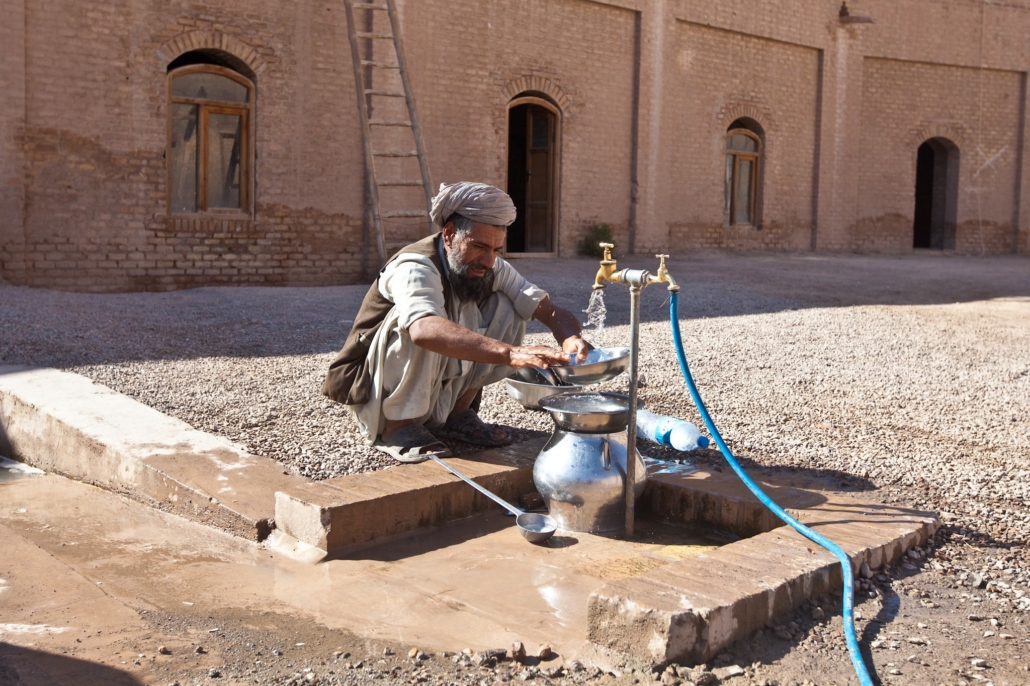10 Facts About Sanitation in Afghanistan

Following decades of civil war and negligence, Afghanistan has been experiencing a crisis regarding clean water and sanitation. The lack of an internal plan and a water infrastructure deficit had elicited urgent consequences such as various waterborne diseases and diarrhoeal diseases. Many organizations such as UNICEF took notice and decided to address this issue at its core. By providing funding and necessary resources, there has been evident progress within Afghanistan towards clean water and better sanitation. Here are 10 facts about sanitation in Afghanistan.
10 Facts About Sanitation in Afghanistan
-
Limited Sanitation: According to the State of the World’s Toilets 2007 report, about 92 percent of Afghanistan’s estimated 26.6 million population did not have access to proper sanitation. Meanwhile, the number reduced to 61 percent by 2017. With this being said, poor sanitation exposes people, mainly children and elders, to life-threatening diseases. This issue also affects women and girls, putting them at risk for both physical and psychological damage. It affects menstrual, pregnancy and postnatal periods and creates an unsafe environment when in these periods.
-
Turmoil: One can see the increasing number of cases surrounding poor sanitation as a direct consequence of the damage inflicted by years of war. Beginning in 1992, constant fighting between different mujahidin groups left cities such as Kabul in ruins, further damaging the water infrastructure. Following in 1996, the Taliban took over but did little to nothing to improve the already damaged water infrastructure, including necessary water pumps. Afghanistan, to this day, is still in turmoil, leaving no priority for local governments to improve sanitation and increase access to clean water.
-
Lack of Reservoirs, Canals and Infrastructure: One major aspect as to why Afghanistan has a difficult time accessing clean water is the evident lack of water infrastructure. Geographically, Afghanistan is a landlocked nation that automatically creates a difficult landscape to receive clean water; therefore, Afghanistan depends on the natural flow of the snow runoff coming from the mountains. There are reservoirs to collect this water, but it is just not enough. Because of the lack of proper water infrastructure, only 30 percent of the water derived from the runoff stays in Afghanistan. Investment towards improving infrastructure is also scarce as the government does not see it as a prominent issue.
-
Open Defecation: Open defecation is an issue that many countries face on a daily basis; however, it has been an astonishingly prevalent issue in Afganistan. It places many of the individuals and families leaving near waterways in much danger as human waste spreads disease quickly. To combat this issue, UNICEF alongside the Ministries of Rural Rehabilitation and Development, Public Health and Education have partnered to end open defecation by 2025. They are pushing for the Community-Led Total Sanitation approach which advocates for people to build and use their own latrines.
-
Increase Water Supply: In addition to implementing a plan against open defecation, UNICEF and the Ministries of Rural Rehabilitation and Development, Public Health, and Education have been working to increase water supply to impoverished communities. They aim to steer the public to get clean water through the reliance of rivers, streams, wells, etc. Also, UNICEF aims to increase the government’s capacity to construct local water supply systems. Because of this new agenda, more than 300,000 new people living in Afghanistan received clean water in 2017.
-
Water Systems: UNICEF is prioritizing gravity-fed piped drinking water systems or systems with solar pumps instead of regular boreholes with handpumps. These methods should provide more water, easy maintenance and close proximity even though they are slightly more expensive. Right now, most of the water comes from the five major rivers in Afghanistan, but this system brings water in an efficient and sustainable way.
-
Action Within Schools: An important place to advocate for proper sanitation would be in the school environment, and UNICEF has done just that. Working with the Ministry of Education, UNICEF has aimed to create clean school environments and provide proper hygiene information in Afghanistan. This plan includes providing clean water, separate bathrooms and new handwashing stations in schools. This program is growing and is starting to enter more schools.
-
Sanitation Efforts Aimed at Women: Some have also taken action towards improving sanitation conditions within schools and workplace settings for women and girls. By installing separate bathrooms for males and females, it provides women the opportunity to manage menstruation in a clean environment. Also, the ongoing introduction of curricula surrounding menstrual hygiene promotes rehabilitation and helps girls all around Afghanistan.
-
Proper Sanitation in Emergencies: Launched in 2005, UNICEF created the WASH emergency center in Afghanistan. This group of various organizations respond during emergencies and help provide clean water, hygiene education and sanitation facilities to the people. For example, they gave hygiene kits to displaced families in the village of Kamalpoor. The kits included soap, detergent, towels, sanitary pads and a plastic bucket to collect water.
-
Health Centres: Most importantly, UNICEF has aimed to make sure that hospitals and health centers are in proper condition to treat patients. The WASH program implemented focused on improving infection programs and patient safety. It is important to pay attention to the health of patients and to decrease as many cases of disease and death as possible, especially in the case of women and children.
Although Afghanistan still has some way to go, it has made tremendous improvements to its sanitation systems. With continued aid from organizations like UNICEF, it should only continue its progression towards clean water and sanitation for all.
– Srihita Adabala
Photo: Flickr
